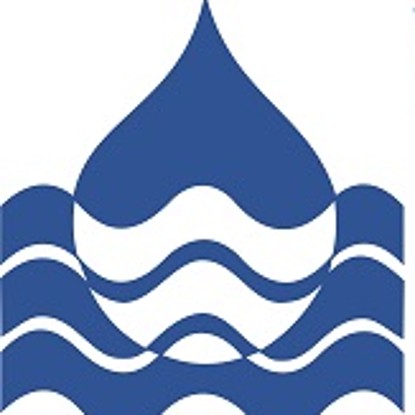Water management topics have been the focus of many research projects at the Technical University of Darmstadt since its foundation in 1877. In the course of the decades, different subject specializations developed, which led to a multitude of chairs and interfaces: In addition to classical hydraulic engineering, these were the chairs of hydromechanics, hydraulics and hydrology. The formative faces and names of the individual chairs from the founding period until today are compiled in the figure below.
History at the Department
The following is a closer look at the professors who have shaped the current Chair of Hydraulic Engineering.
The first director was Prof. Alexander Koch (1895-1920), a very well-known expert at the time. He was a member of the Imperial Canal Commission, which designed the Kiel Canal. In 1904, under his direction, the construction of the first hydraulic engineering experimental station was started at the Technical University of Darmstadt, making it the fourth such university facility in the world. Prof. Koch carried out the first model tests for tidal rivers worldwide and was also appointed to the international commission for the Panama Canal, among other things.
He was followed by Prof. Karl Thürnau (1920-1941), during whose tenure a new experimental site of approx. 90 m x 300 m with an experimental hall and its own office and lecture hall building was built, which unfortunately fell victim to a bombing raid on Darmstadt during the Second World War.
Prof. Wilhelm Detig (1941-1958) presided over the Institute of Hydraulic Engineering and Foundation Engineering, which after Detig's retirement also became the present Institute of Geotechnics, in its third institute building. In 1955, the Institute was extended by the professorship for hydromechanics and hydraulics, which was held from 1955 to 1967 by Prof. Otto Kirschmer, who had already been rector of the TH Dresden in 1934 and 1935.
From 1961 to 1977, Prof. Friedrich Bassler headed the Institute of Hydraulic Engineering. In 1966 he founded the Darmstädter Wasserbaulichen Mitteilungen, which today have a wide readership through the exchange of publications with other universities and libraries. Prof. Bassler became known nationally and internationally in particular for his plans for a hydrosolar depression power plant in the Kattara-Senke in Egypt. According to this plan, a constant stream of water from the Mediterranean Sea would have flowed into the Senke, which would never have become full due to high evaporation. With built-in water turbines, energy equivalent to about 75% of a Biblis-type nuclear power plant unit would have been generated, after all. The big problem was (and still is) the breakthrough through the up to about 200 m high peripheral mountains between the depression and the Mediterranean Sea. Bassler's idea, which was generally accepted at the time, was to blast free channels under the condition of peaceful use of nuclear power at the time. Due to a change of political orientation in Egypt, this idea was never realized.
Prof. Bassler was followed by Prof. Joseph Mock (1979-1994) for Hydraulic Engineering and Prof. Ralph C.M. Schröder (1967-1990) for Hydrology and Hydraulics, which received a fourth experimental station in the early 1970s. In the course of the University reform, further professorships were established: Prof. Wolfgang Schröder for Hydraulic Engineering (1972-2000), Prof. Walter Tiedt for Hydromechanics and Groundwater Hydraulics (1972-1998), Prof. Hannes Lacher for Groundwater Hydraulics (1972-1982) and Prof. Georg Euler for Hydrology (1980-1987).
After Prof. Mock, Prof. Ulrich Zanke headed the Chair of Hydraulic Engineering (1995-2012). The Chair of Engineering Hydrology and Water Resources Management was headed at the same time by Prof. Manfred Ostrowski.
Since 2013, Hydraulic Engineering and Hydraulics have again been united in one Chair: The current Chair of Hydraulic Engineering is currently headed by Prof. Boris Lehmann. Today, a large hydraulic engineering research facility with 2500 m² floor space and a powerful pump-driven water circuit as well as a workshop area are assigned to the department. The current hydraulic engineering issues dealt with have both a basic and applied character – for this purpose, hydraulic engineering experimentation is still heavily used and supplemented by modern hydrodynamic modeling and field test/measurement techniques. Today, an important part of the training of young hydraulic engineers also takes place not only on the computer, but still on the basis of demonstration and exercise models in the hydraulic engineering research laboratory.





